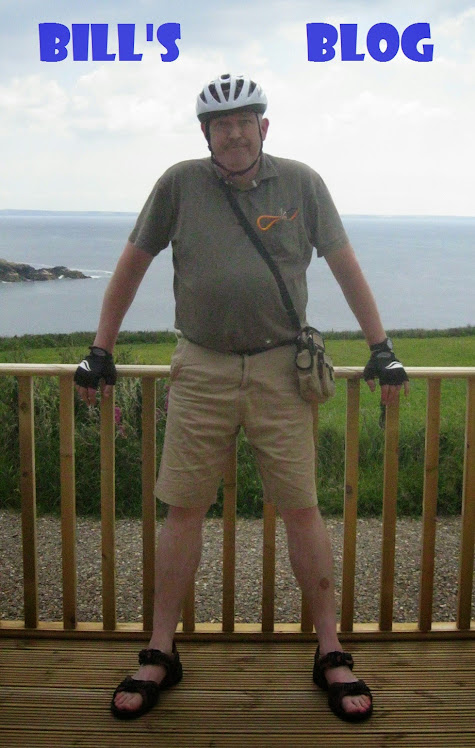
Your correspondent sizing up St Peter's Church, Carmarthen. Rhys ap Thomas' tomb is inside, prominently placed off centre at the altar end of the nave
Poor old Richard III Society! This is the deluded group which makes out that Richard was a thoroughly nice chap who was misunderstood. One of the Society's claims has always been that Richard's crooked back was just Tudor propaganda and they successfully got most historians to agree.
But the discovery of Richard's body in a Leicestershire car-park (see the story here) shows that he did indeed have a pronounced twist in his spine. The Society should embrace this and celebrate their hero as a role model for people with physical disabilities - he was certainly courageous and famed as a fighter in spite of his problem. Somehow I suspect they won't, any more than they can bring themselves to accept the clear evidence that their hero murdered the Princes in the Tower.
Another ancient story from Bosworth Field (widely dismissed of course by the same historians) is that Henry Tudor's faithful lieutenant Sir Rhys ap Thomas actually killed Richard in the battle by whacking him on the head with his pole-axe (basically a combined axe and blade on the end of a pole). As contemporary poet Guto'r Glyn (a Yorkist soldier, oddly enough, so no Tudor propagandist) testifies "Lladd y baedd, eilliodd ei ben" ("He slew the boar, shaved his head") - the boar was Richard's symbol.
Actually you read it here first long before the scientists in Leicester examined the bones.
And, lo and behold, the criminal usurper's skull unveiled this week clearly shows the evidence of Rhys's fatal blow. Next time I visit St Peter's in Carmarthen I will pause to pay respects at the tomb of this (until now) unrecognised regicide who brought the whole of Mediaeval history to an end with one swing of his formidable - and distinctly Mediaeval - weapon.
Incidentally Rhys too might have ended up in a car park because he was buried in the Priory in the centre of Carmarthen, the site recently of Tesco's and latterly Wilkinsons. Fortunately, however, his body was moved to St Peter's when the Priory was dissolved by Henry VIII whom he had also served loyally after Henry VII died. Correction 8 Feb! I was muddling the site of Carmarthen's Priory with the site of the Friary - actually Rhys's former burial place is now a play-ground or allotments so far as I can see...
